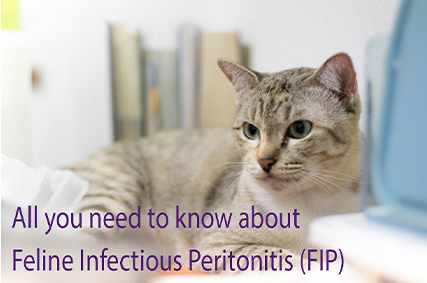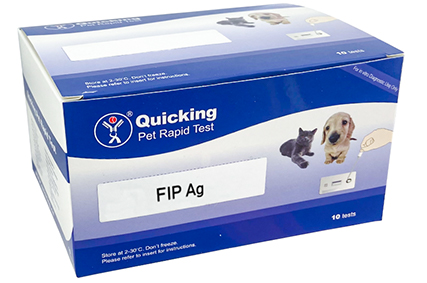What Is Feline Infectious Peritonitis (FIP) in Cats?
Feline infectious peritonitis is a disease caused by a viral infection with a coronavirus that is specific to cats. This type of coronavirus cannot infect people or other species.
FIP can be very difficult to diagnose because it can infect many organ systems, ranging from the abdomen to the eyes to the central nervous system. FIP symptoms also resemble symptoms from several other conditions, and the exact nature of your cat’s symptoms will depend on what form of the disease your cat has and which organs are affected.

Symptoms of Feline Infectious Peritonitis
A variety of symptoms can be seen in cats with FIP, depending on which organ system is affected. FIP can affect the liver, kidneys, pancreas, or other organ systems.
Most cats will start showing symptoms of simply not feeling well—eating poorly, running a fever, or acting lethargic. Some animals will develop other diseases, depending on the type of the disease present. There are two main forms of FIP:
Wet (or effusive) form: Causes bloating and swelling in the abdomen (ascites) and may affect the heart and lungs. Cats with this form may pant and act sleepy or lethargic.
Dry (or non-effusive) form: Usually affects the eyes and may have neurological symptoms such as trouble with balance and seizures.
These forms are mainly used for diagnostic purposes, and one cat may show symptoms from both forms.
Because the symptoms associated with FIP are extremely varied and variable, it can be very hard to diagnose FIP based on clinical signs alone. Conditions that have similar symptoms include abdominal tumors, toxoplasmosis, infection with mycobacterium, and other conditions.
Causes of FIP in Cats
Feline infectious peritonitis is caused by a coronavirus that is unique to cats—it is not contagious to people, dogs, or other species of animal. This virus typically lives in the cat’s intestinal system. It’s spread through contact with feces in most cases, as infected cats shed the virus into litter boxes. Respiratory transmission is possible but less common. Because the most common route of infection is contact with feces, cats living in multi-cat households that share litter boxes are most likely to get infected.
Infection with feline coronavirus is very common among cats, but it’s estimated that less than 5% of cats infected with feline coronavirus will go on to develop FIP. Cats with compromised immune systems are at higher risk of developing FIP, including kittens and cats with chronic diseases.
How Veterinarians Diagnose FIP in Cats
Diagnosis of FIP can be very challenging. The “wet form” that presents with abdominal swelling is relatively straightforward to diagnose by drawing a sample of fluid from the abdomen for analysis. For other cats, additional testing may be required to piece together the puzzle and suggest FIP.
There is no completely reliable FIP test available to run on living cats. A conclusive diagnosis sometimes comes with a necropsy (the animal version of an autopsy) after the cat passes away. In most cases, many tests need to be run to rule out other diseases, leaving FIP as the most likely possibility.

This following video is to introduce the kit component of Shanghai Quicking Biotech Feline Infectious Peritonitis virus FIP Ag Test Kit for Vet Diagnosis and how to use it:
Copyright © Quicking Biotech Co., Ltd. All Rights Reserved Sitemap |